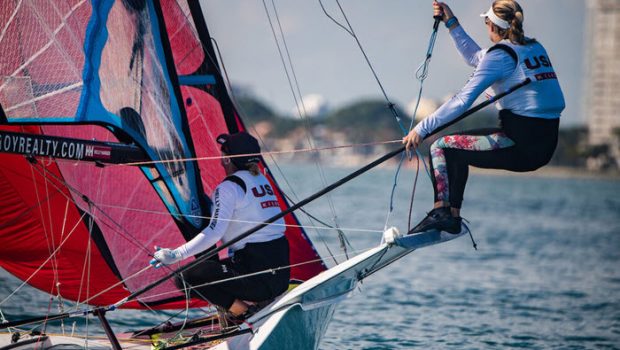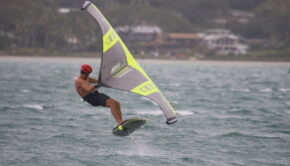Tokyo 2020: Preparing for the heat
Published on May 23rd, 2021
With the COVID-19 pandemic and yearlong postponement, the greatest threat to the Tokyo 2020 Olympics doesn’t seem nearly as threatening, but the anticipated stifling heat and humidity remains a reality for competing athletes.
While the playing surface for sailors provides some relief, the body will still be challenged to endure the conditions, with the International Olympic Committee providing the following tips on how to beat the heat:
TEN TOP TIPS
1. Heat acclimatization by training in the heat for at least two weeks.
2. If you cannot acclimatize for two weeks, try at least one week!
3. Implement your hydration plan starting in the days preceding the event.
4. Use pre-cooling strategies during your warm-up (e.g. ice vest).
5. Test your cooling strategies during practice prior to the event/competition.
6. Do not use clothing that limits sweat evaporation.
7. Many medications can impair your ability to tolerate heat, so discuss your medications with your sports physician.
8. Diarrhea and vomiting impair your hydration status and will require the use of Oral Rehydration Solutions (ORS).
9. Use a non-greasy sunscreen.
10. Use a hat and Category 3 sunglass
The best way to prepare for competition in the heat is to train in the heat (i.e. to heat acclimatize). Heat adaptation is achieved via repeated exercise/heat exposure that increases body core and skin temperature, as well as inducing significant sweating.
This adaptation to the heat can be achieved using hot ambient conditions (i.e. acclimatization) or by simulating hot ambient conditions using purpose-built environmental chambers or improvised low-tech “hot rooms” (i.e. acclimation). The number of days required to achieve optimal adaptation varies between individuals, but most adaptations tend to develop within 7–10 days, with 14 days being optimal for most.
It is therefore recommended that athletes train in a similar environment to that in which competition will occur, commencing heat adaptation at least two weeks prior to competition. Conducting an initial heat acclimatization camp several weeks before the target event may also enhance the rate of adaptation to the heat in a follow-up pre-competition camp.
The most visible body adaptations to repeated training in the heat include an increased sweat rate, a decreased heart rate at a given intensity, a better retention of electrolytes, and a decreased body core temperature.
Full report…click here.
Tokyo 2020 Olympic Sailing Program
Men’s One Person Dinghy – Laser
Women’s One Person Dinghy – Laser Radial
Men’s Two Person Dinghy – 470
Women’s Two Person Dinghy – 470
Men’s Skiff – 49er
Women’s Skiff – 49erFx
Men’s One Person Dinghy Heavy – Finn
Men’s Windsurfing – RS:X
Women’s Windsurfing – RS:X
Mixed Multihull – Nacra 17
Original dates: July 24 to August 9, 2020
Revised dates: July 23 to August 8, 2021








 We’ll keep your information safe.
We’ll keep your information safe.